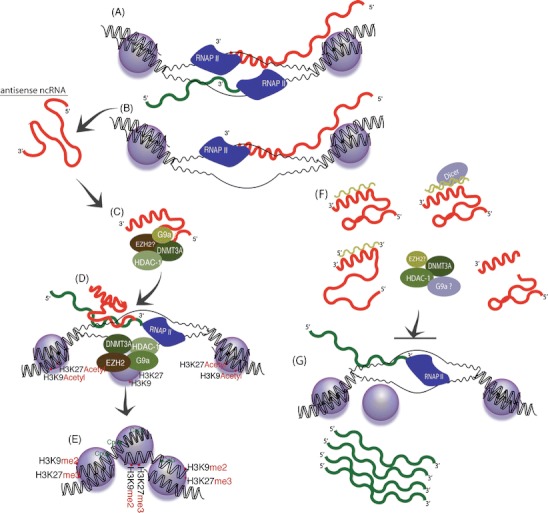Fig. 2.

Endogenous antisense non-coding RNA mediated transcriptional silencing and activation. Long antisense non-coding RNAs emanating from either a bidirectionally transcribed, b alternative alleles, or pseudogenes, (Morris et al. 2008; Hawkins and Morris 2010) can fold into secondary structures (c) and interact with various proteins as well as target these proteins to homology containing loci in the genome (d). The antisense RNA protein complexes can then target the corresponding homology containing loci in the genome where epigenetic remodeling of the local chromatin via directed histone and DNA methylation can occur (e). When the antisense non-coding RNAs are targeted by either single-stranded oligonucleotides or siRNAs, the secondary structure is changed or interactions with the epigenetic remodeling protein complexes are blocked (f). The result is a loss of antisense non-coding RNA-directed epigenetic regulation of gene expression and subsequent activation of gene transcription (g)
